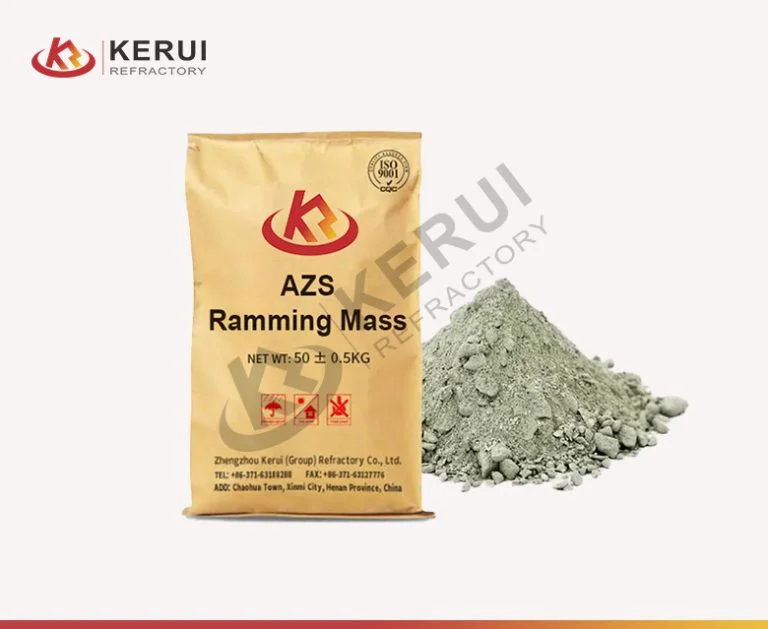Ramming mass is a refractory material used in various industrial applications where high temperatures and harsh conditions prevail. This specialized material plays a crucial role in lining the inner walls of furnaces, kilns, and other high-temperature vessels to withstand extreme heat, chemical erosion, and mechanical wear. Understanding its composition, uses, and applications provides insight into its importance in modern industrial processes.

Composition of Ramming Mass
What is ramming mass? Ramming mass is primarily composed of refractory aggregates, powders, and binders that are carefully selected based on the specific requirements of the application. The main components include:
Refractory Aggregates: These are typically high-purity materials such as alumina, silica, magnesia, and chromite, chosen for their thermal resistance and mechanical strength.
Powders: Finely ground refractory materials like alumina, magnesia, and silica are added to enhance packing density and improve the overall performance of the ramming mass.
Binders: Various types of binders, such as high-temperature clays, liquid sodium silicate, and special polymers, are used to hold the refractory particles together and provide cohesion during installation and service.
The precise combination and ratio of these components are tailored to meet the thermal, chemical, and mechanical demands of specific industrial applications.

Uses of Ramming Mass
Ramming mass is employed in a wide range of industrial processes, including:
Steelmaking: In electric arc furnaces (EAFs) and ladles, ramming mass lines the walls and bottoms to withstand intense temperatures and chemical reactions during the melting and refining of steel. We also produce high quality fire brick mortar.
Foundry: Used in induction furnaces and coreless induction furnaces to line the crucibles and maintain thermal stability during the melting and casting of metals.
Glass Manufacturing: Crucibles and glass tanks in glass manufacturing facilities are lined with ramming mass to resist the corrosive effects of molten glass and maintain structural integrity at high temperatures.
Cement Industry: Rotary kilns and other cement production equipment utilize ramming mass to line the interiors, ensuring prolonged operation under extreme thermal and chemical conditions.
Non-Ferrous Metals: Copper, aluminum, and zinc smelting operations utilize ramming mass in furnaces and converters to withstand high temperatures and chemical reactions during metal extraction and refining. We also produce different kiln shelves for sale.

Applications of Ramming Mass
The application of ramming mass involves a specialized process known as ramming, where the material is compacted into place using pneumatic or manual tools. This ensures a dense, uniform lining that can withstand the thermal cycling and mechanical stresses encountered during operation. Key considerations in the application process include:
Preparation: Surface preparation of the furnace or kiln ensures proper adhesion and integrity of the ramming mass lining.
Installation: Ramming mass is added in layers and compacted using appropriate tools to achieve the desired density and thickness.
Curing: After installation, the ramming mass may require a curing process to achieve full strength and thermal stability before being put into service. We also produce different kiln shelves for sale.

Conclusion
Ramming mass represents a critical component in modern refractory technology, providing essential protection and performance enhancements to industrial furnaces and kilns operating under extreme conditions. Its composition, tailored for specific applications, ensures durability, thermal efficiency, and resistance to chemical erosion, thereby prolonging equipment life and optimizing industrial processes. As industries continue to advance, the role of ramming mass in enabling sustainable and efficient manufacturing practices remains paramount, driving innovation and reliability across global industrial sectors.
